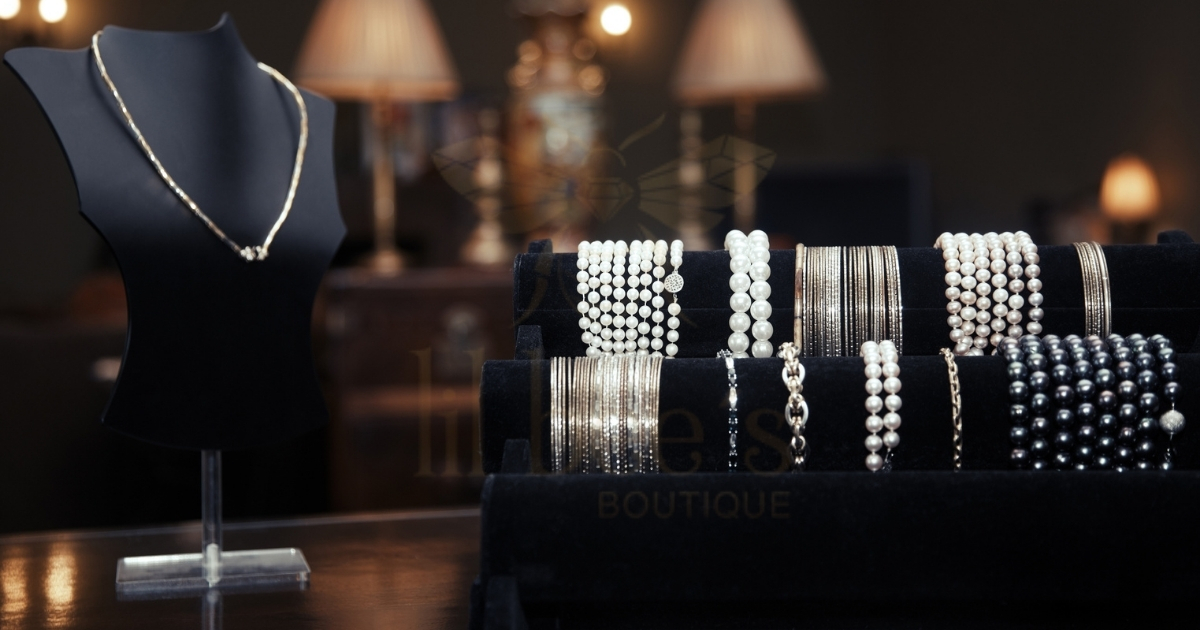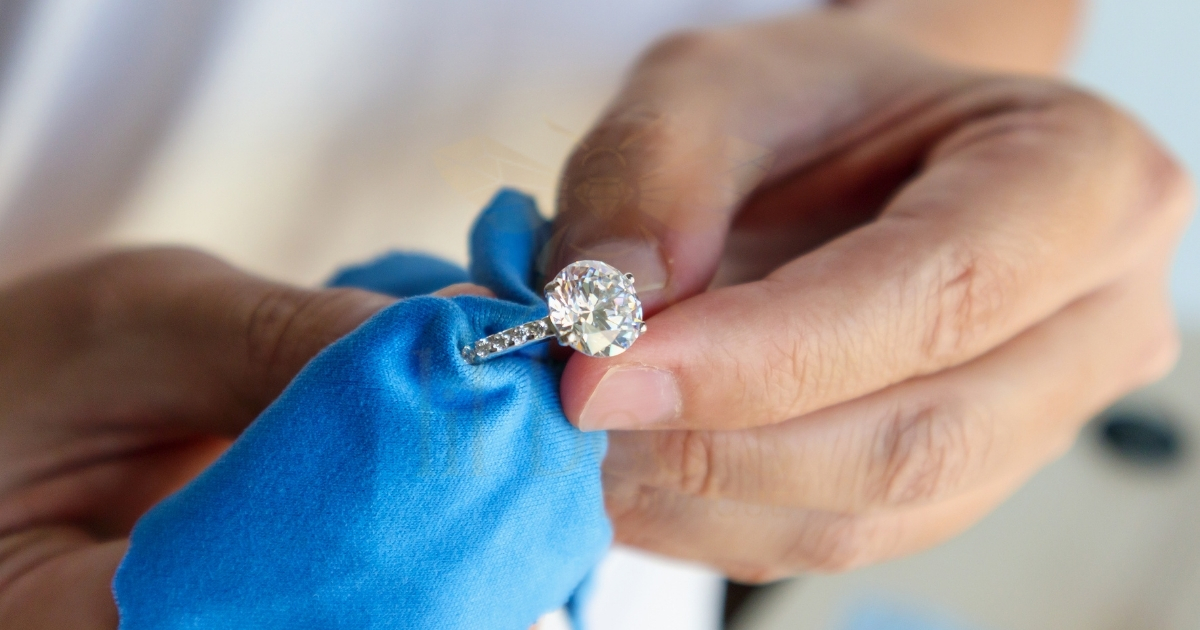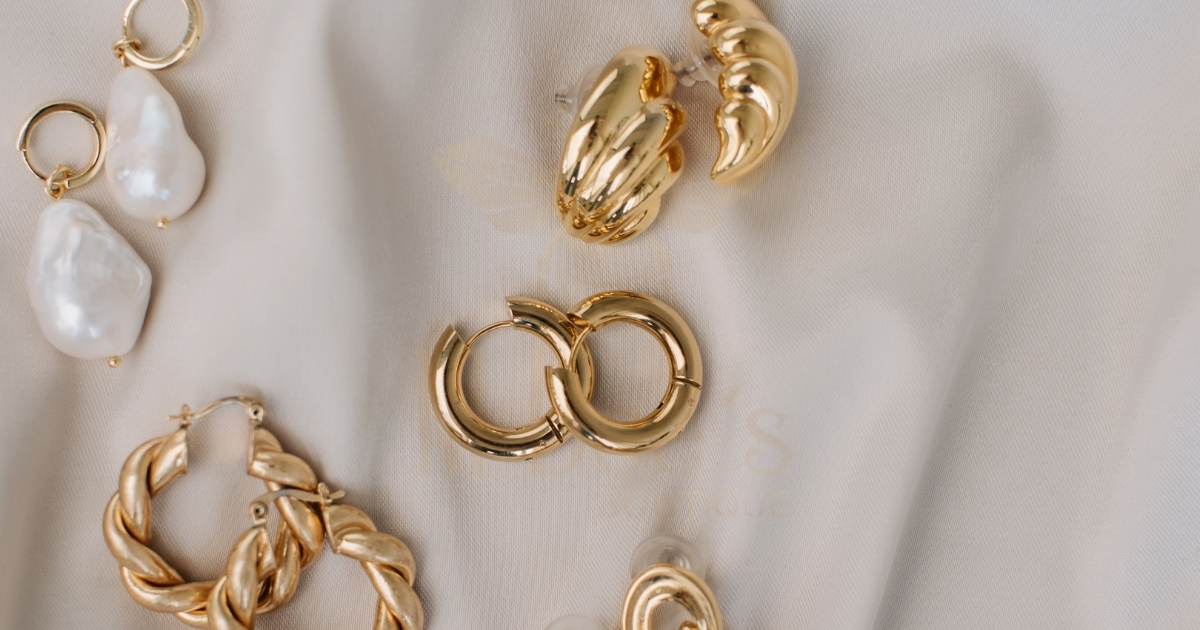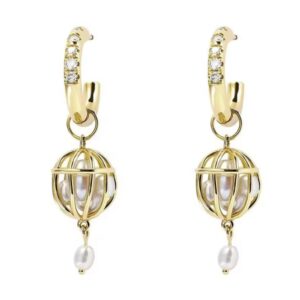Does Rhodium Plated Jewelry Tarnish?
What is rhodium plating?
Rhodium plating is a process where a thin layer of rhodium, a precious metal, is electroplated onto jewelry pieces. This technique is commonly used to enhance the appearance and durability of various jewelry items, particularly those made from white gold or silver. The rhodium coating provides a bright, reflective finish that resembles platinum, making it a popular choice for those seeking a luxurious look without the hefty price tag.
At Lil Bee’s Boutique, we offer a selection of rhodium plated jewelry that combines style with durability. Our customers often ask about the longevity of this plating process and its resistance to tarnishing.
Tarnish resistance of rhodium
Rhodium is known for its exceptional tarnish resistance, which is one of the primary reasons it’s used in jewelry plating. Unlike silver or copper, which can quickly develop a dull or discolored appearance when exposed to air and moisture, rhodium maintains its bright, white luster for an extended period. This resistance to tarnishing is due to rhodium’s chemical stability and its ability to form a protective oxide layer on its surface.
- Highly resistant to oxidation
- Maintains shine longer than many other metals
- Does not react with most chemicals in everyday use
Factors affecting rhodium plating durability
While rhodium plating is highly resistant to tarnishing, its durability can be affected by various factors:
- Thickness of the plating: A thicker rhodium layer generally lasts longer.
- Wear and tear: Frequent use can cause the plating to wear off over time.
- Exposure to chemicals: Harsh substances can degrade the plating.
- Quality of the base metal: The underlying metal’s properties can influence the plating’s longevity.
| Factor | Impact on Durability |
| Plating Thickness | Higher thickness increases lifespan |
| Wear and Tear | Regular use accelerates wear |
| Chemical Exposure | Can cause plating to deteriorate |
| Base Metal Quality | Affects overall jewelry durability |
What is Rhodium and Its Properties?
Characteristics of rhodium
Rhodium is a rare, silvery-white metallic element belonging to the platinum group metals. It possesses several unique characteristics that make it valuable in jewelry making:
- High reflectivity: Rhodium has an exceptionally bright and reflective surface.
- Hardness: It’s harder than gold and platinum, providing better scratch resistance.
- Corrosion resistance: Rhodium doesn’t easily corrode or oxidize in normal conditions.
- Hypoallergenic: It’s less likely to cause allergic reactions compared to other metals.
These properties contribute to rhodium’s popularity in the jewelry industry, especially for plating purposes.
Why rhodium is used in jewelry plating
Jewelers and manufacturers choose rhodium for plating due to its numerous benefits:
- Enhanced appearance: It gives jewelry a brilliant, white finish.
- Increased durability: The hard surface protects softer underlying metals.
- Tarnish prevention: It helps prevent discoloration of the jewelry piece.
- Versatility: Can be used on various base metals to improve their look and performance.
- Improves the aesthetic appeal of white gold and silver
- Provides a protective layer against scratches and wear
- Reduces maintenance requirements for jewelry pieces
Rhodium Plating Process and Its Benefits 
How jewelry is rhodium plated
The rhodium plating process involves several steps to ensure a high-quality finish:
- Cleaning: The jewelry is thoroughly cleaned to remove any dirt or oils.
- Polishing: The surface is polished to create a smooth base for plating.
- Electroplating: The piece is immersed in a rhodium solution and an electric current is applied.
- Rinsing and drying: The plated jewelry is rinsed and carefully dried.
This process requires precision and expertise to achieve the desired results.
Advantages of rhodium plated jewelry
Rhodium plated jewelry offers several advantages over non-plated pieces:
- Enhanced brilliance and shine
- Increased scratch resistance
- Reduced likelihood of tarnishing
- Hypoallergenic properties for sensitive skin
- Improved overall durability of the jewelry
| Advantage | Description |
| Brilliance | Provides a mirror-like finish |
| Durability | Offers better resistance to wear |
| Tarnish Resistance | Maintains appearance longer |
| Hypoallergenic | Suitable for sensitive skin |
Comparing Rhodium Plated Jewelry to Other Metals
Rhodium vs. sterling silver
When comparing rhodium plated jewelry to sterling silver, several key differences emerge:
- Tarnish resistance: Rhodium plated pieces resist tarnishing much better than sterling silver.
- Maintenance: Sterling silver requires more frequent polishing to maintain its luster.
- Appearance: Rhodium has a brighter, more reflective surface than sterling silver.
- Cost: Rhodium plating can be more expensive initially but may save on maintenance costs.
- Rhodium plating can enhance the appearance of sterling silver jewelry
- Sterling silver is more prone to developing a patina over time
- Rhodium plated items typically require less frequent cleaning
Rhodium vs. white gold
White gold and rhodium plated jewelry are often compared due to their similar appearance:
- Color: Rhodium plating provides a brighter white finish than most white gold alloys.
- Durability: White gold is generally more durable as a solid metal, but rhodium offers better scratch resistance.
- Maintenance: Rhodium plating may need to be reapplied periodically, while white gold is more stable long-term.
- Cost: White gold is typically more expensive than rhodium plated jewelry.
- Rhodium is often used to plate white gold to enhance its color
- White gold retains its value better as a precious metal
- Rhodium plating can wear off over time, revealing the underlying metal
Rhodium vs. platinum
Platinum and rhodium share some similarities but also have distinct differences:
- Appearance: Both have a similar bright, white color.
- Durability: Platinum is extremely durable as a solid metal, while rhodium plating offers excellent scratch resistance.
- Weight: Platinum jewelry is heavier than rhodium plated pieces.
- Price: Solid platinum jewelry is significantly more expensive than rhodium plated items.
- Rhodium plating can mimic the look of platinum at a lower cost
- Platinum develops a unique patina over time, while rhodium maintains its original shine
- Rhodium plated jewelry is more affordable and accessible for many consumers
Maintaining Rhodium Plated Jewelry 
Proper care and cleaning techniques
To keep your rhodium plated jewelry looking its best, follow these care and cleaning tips:
- Clean gently with a soft cloth after each wear to remove oils and dirt.
- Use mild soap and warm water for deeper cleaning when necessary.
- Avoid harsh chemicals and abrasive materials that can damage the plating.
- Store jewelry pieces separately to prevent scratching.
- Use a soft-bristled toothbrush for intricate designs
- Dry thoroughly after cleaning to prevent water spots
- Consider professional cleaning for valuable or delicate pieces
Extending the lifespan of rhodium plating
To maximize the durability of your rhodium plated jewelry:
- Remove jewelry before swimming, bathing, or engaging in strenuous activities.
- Apply lotions, perfumes, and hairsprays before putting on your jewelry.
- Avoid exposing the jewelry to harsh chemicals or extreme temperatures.
- Have the plating checked periodically by a professional jeweler.
- Rotate your jewelry to distribute wear evenly
- Consider replating when signs of wear become noticeable
- Choose rhodium plated jewelry for occasional rather than everyday wear for longer-lasting results
Signs of Rhodium Plating Wear and Tarnishing
How to identify when rhodium plating is wearing off
Recognizing the signs of rhodium plating wear is crucial for maintaining your jewelry’s appearance:
- Yellow or rose tones appearing: This indicates the underlying metal is showing through.
- Dull patches: Areas of less shine may suggest the plating is thinning.
- Uneven coloration: Inconsistent color across the piece can signal wear.
- Visible base metal: In extreme cases, you may see the actual color of the base metal.
- Check areas of high wear, such as ring bands and bracelet clasps
- Compare the piece to newer rhodium plated items to spot differences
- Use a magnifying glass to inspect for small areas of wear
Differences between tarnishing and plating wear
It’s important to distinguish between tarnishing and plating wear:
- Tarnishing: A chemical reaction causing discoloration, typically affecting the entire surface.
- Plating wear: Physical erosion of the rhodium layer, often in specific high-wear areas.
- Appearance: Tarnish often looks like a dull film, while wear exposes the underlying metal.
- Reversibility: Tarnish can often be cleaned off, while plating wear requires replating.
- Tarnish may appear as a yellowish or grayish hue on the surface
- Plating wear is more likely to occur on edges and raised areas
- Regular cleaning can help prevent tarnish but won’t address plating wear
Replating Rhodium Jewelry
When to consider replating
Consider replating your rhodium jewelry when:
- The underlying metal becomes visible in multiple areas.
- The piece has lost its bright, reflective finish.
- You notice significant color changes or unevenness.
- The jewelry is a cherished item you want to restore to its original appearance.
At Lil Bee’s Boutique, we can assess your jewelry and recommend when replating might be beneficial.
Cost and process of rhodium replating
The rhodium replating process involves:
- Removing any remaining rhodium plating
- Polishing and preparing the surface
- Applying a new layer of rhodium plating
- Final polishing and quality check
Costs can vary depending on the size and complexity of the piece, but generally range from 0 to 50 for most items.
- Larger pieces or those with intricate designs may cost more
- Some jewelers offer package deals for multiple items
- The process typically takes a few days to complete
Alternatives to Rhodium Plated Jewelry
Other tarnish-resistant jewelry options
If you’re looking for alternatives to rhodium plated jewelry, consider these options:
- Platinum: Naturally tarnish-resistant but more expensive
- Palladium: Similar to platinum with a lower price point
- Stainless steel: Affordable and highly resistant to tarnishing
- Titanium: Lightweight, hypoallergenic, and tarnish-resistant
- High-karat gold (18k or higher) is less prone to tarnishing
- Niobium is a hypoallergenic option that resists tarnish
- Ceramic jewelry offers a modern, tarnish-free alternative
Choosing the right jewelry for your needs
When selecting jewelry, consider:
- Your lifestyle and how often you’ll wear the piece
- Your budget for both initial purchase and maintenance
- Any skin sensitivities or allergies you may have
- The level of care you’re willing to provide
- Consider mixing materials for both style and practicality
- Invest in quality pieces for items you’ll wear frequently
- Don’t hesitate to ask jewelers about the best options for your specific needs
FAQ’s:
Does rhodium plated jewelry tarnish over time?
Rhodium plated jewelry is highly resistant to tarnishing, but it’s not entirely immune to wear and tear. Over time, the rhodium plating can wear off, exposing the underlying metal which may be more prone to tarnishing. The rate at which this occurs depends on factors such as the thickness of the plating, how often the jewelry is worn, and the conditions it’s exposed to.
How long does rhodium plating typically last?
The longevity of rhodium plating can vary significantly depending on several factors. On average, rhodium plating can last anywhere from six months to two years with regular wear. However, pieces that are worn less frequently or are subject to less abrasion may maintain their plating for several years. The thickness of the plating, the quality of the application process, and how well the jewelry is cared for also play crucial roles in determining how long the plating will last.
Can I prevent my rhodium plated jewelry from tarnishing?
While you can’t completely prevent rhodium plated jewelry from wearing over time, you can take steps to extend its lifespan and maintain its appearance. Avoid exposing your jewelry to harsh chemicals, remove it before swimming or bathing, and store it properly when not in use. Regular gentle cleaning with a soft cloth can help maintain its shine. Additionally, having your jewelry professionally cleaned and inspected periodically can help catch any wear early and allow for timely replating if necessary.
Is rhodium plated jewelry hypoallergenic?
Rhodium plated jewelry is generally considered hypoallergenic, making it an excellent choice for people with sensitive skin or metal allergies. Rhodium itself is unlikely to cause allergic reactions. However, it’s important to note that as the plating wears off, the underlying metal may be exposed, which could potentially cause reactions if you’re allergic to that particular metal. If you have severe metal allergies, it’s best to consult with a jeweler or dermatologist before purchasing rhodium plated jewelry.
Does plated jewelry tarnish faster than solid metal jewelry?
Plated jewelry, including rhodium plated pieces, typically tarnishes faster than solid metal jewelry. This is because the plating can wear off over time, exposing the base metal which may be more prone to tarnishing. Solid metal jewelry, especially those made from noble metals like platinum or high-karat gold, are generally more resistant to tarnishing. However, the tarnish resistance of plated jewelry can be quite good while the plating remains intact, especially in the case of rhodium plating.
How can I tell if my jewelry is rhodium plated?
Identifying rhodium plated jewelry can be challenging without professional tools, but there are some indicators to look for. Rhodium plated jewelry typically has a very bright, white, and reflective finish that’s more brilliant than white gold or silver. If you notice areas where the color seems to be wearing off, revealing a yellower or darker metal underneath, this is a sign of rhodium plating. Additionally, rhodium plated jewelry is often less expensive than similar pieces made of solid platinum. When in doubt, consult with a professional jeweler who can perform tests to confirm the presence of rhodium plating.
Does rhodium plated tarnish differently from other plated metals?
Rhodium plated jewelry tends to resist tarnishing better than many other plated metals. Unlike silver-plated or gold-plated items which can develop a visible tarnish or patina, rhodium plating typically maintains its bright appearance until it wears off. When rhodium plating does wear, it’s more likely to reveal the underlying metal rather than showing traditional tarnish. This is different from, say, silver plating, which can develop a dark or yellowish tarnish over time. The way rhodium plated jewelry ages is often more about wear than traditional tarnishing.
Can I rhodium plate my existing jewelry to prevent tarnishing?
Yes, you can have existing jewelry rhodium plated to enhance its appearance and tarnish resistance. This process is particularly common for white gold jewelry, which can develop a yellowish tint over time. Rhodium plating can restore the bright, white appearance and provide additional protection against tarnishing. However, it’s important to note that rhodium plating is not a permanent solution and will need to be reapplied periodically. The frequency of replating depends on wear and tear, but typically ranges from every six months to two years for frequently worn pieces.


 Zona (dawn) earrings - Silver Jewelry
Zona (dawn) earrings - Silver Jewelry